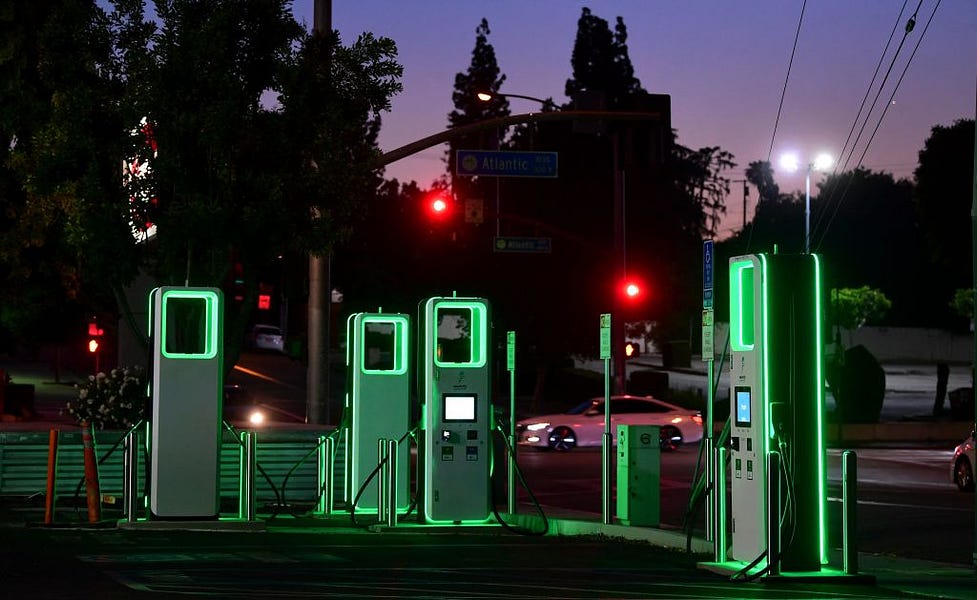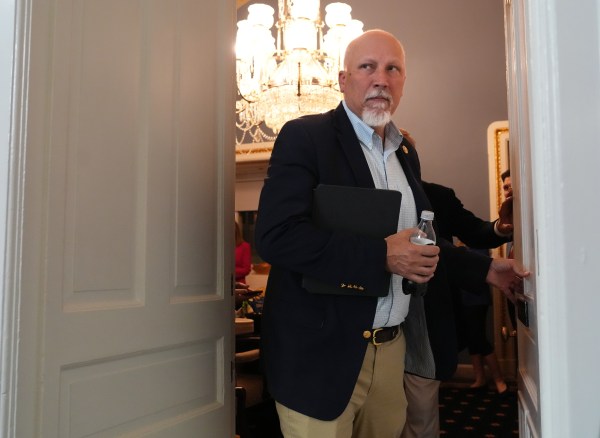Yesterday, the Senate passed the much-hyped Infrastructure Investment and Jobs Act (aka the “bipartisan infrastructure bill”), which now heads to the House for additional consideration after the August recess. Most of the attention—from the media and the punditocracy—has focused on the bill’s politics, fiscal and economic impact, and spending on classic “infrastructure” like roads and bridges. But also buried in the 2,700-page bill is tens of billions of taxpayer dollars for subsidies to renewable energy companies, with little regard, it seems, for the bad economics and history of this kind of “green industrial policy” in the United States. Since my recent (and very long!) Cato paper on industrial policy covered much of this ground, today’s newsletter will summarize that research—n a (hopefully!) more digestible form.
What’s In the Bill
As is often the case with massive legislation, it’s hard to find a good, concise summary of the infrastructure bill’s renewable energy subsidies (the Senate Republican Policy Committee has a pretty good summary of the entire bill, if you’re interested), but the Wall Street Journal Editorial Board last week highlighted some of the biggest subsidy provisions:
-
The bill allocates $21.5 billion for the Department of Energy’s new “Office of Clean Energy Demonstrations,” which will act as a government venture-capital fund for various green energy startups.
-
DOE also gets $2.4 billion to subsidize advanced nuclear reactor projects; $3.5 billion for carbon capture and storage projects; $8 billion for “clean hydrogen” projects; $5 billion for projects that “demonstrate innovative approaches to transmission, storage, and distribution infrastructure to harden and enhance resilience and reliability”; $9 billion for “grid-balancing technologies”; and $2.5 billion for “capacity contracts” to backstop transmission developers in case of limited market demand for renewable energy.
-
Outside of DOE, the bill allocates $7.5 billion for electric vehicle charging stations; $6 billion for nuclear plants currently scheduled to close; and several billion more for various tax credits and loan guarantees.
A separate breakdown from E&E News reveals numerous other energy subsidies tucked in the bill, much to the delight of the quoted lobbyists’ and trade associations receiving those funds.
As you can imagine, the Journal editors aren’t exactly thrilled with these new programs, but even the bill’s supporters acknowledge (and cheer) what’s going on here—green industrial policy:
The DOE’s ambit is growing again, and now that lawmakers in both parties have embraced industrial policy as the only way to counter China, you can see it gaining its old planning role. So the bill, for instance, beefs up the DOE’s ability to authorize new electricity transmission. It charges the DOE with spending $6 billion to beef up the nascent American battery industry. It frees the DOE to make loans to small businesses. And it also puts the DOE in charge of a program that will keep aging nuclear plants open.
Missing from the cheerleading, however, is any discussion how past U.S. efforts at green industrial policy have fared, especially at the DOE. Perhaps that’s because this history reveals a host of economic and political problems.
Public Choice Theory (Again)
For starters, recent U.S. green industrial policy efforts have been poster children for “public choice theory” (which we detailed in this previous newsletter) and how politics often corrupts the implementation of federal energy programs. For example, a 2018 review by George Mason University’s David Hart of 53 DOE energy technology “demonstration projects” (i.subsidized small-scale projects intended to determine the efficacy of a certain technology) funded by the 2009 American Recovery and Reinvestment Act (ARRA) revealed that coal-related carbon capture projects got special treatment from DOE and “dominate[d] the portfolio from a fiscal perspective… accounting for about five out of every six dollars allocated to energy-demonstration projects during the Obama era.” Meanwhile, technologies with more potential, such as nuclear power, renewables, and gas-fired electricity plants, were ignored, thus putting them at a competitive disadvantage in the U.S. energy market.
At least some of this special treatment, Hart notes, was because of politics—especially when it came to the largest project in DOE’s portfolio (receiving almost one quarter of all DOE demonstration project funding), FutureGen:
This megaproject, which dates back to 2003 and was terminated for the first time in 2008, was revived through ARRA funding earmarked for its Illinois site. President Obama, then a senator from Illinois, had vowed during his 2008 campaign to support clean coal technologies, and the state of Illinois (which had invested its own funds in the project) and its representatives in Congress (and those of surrounding states) pushed to include it among the “shovel-ready” projects eligible for the stimulus. Much like the Clinch River breeder reactor demonstration project…, the local fiscal benefits of FutureGen apparently weighed heavily in its vampire-like rise from the dead.
Another federally funded clean coal demonstration project in Kemper, Mississippi—excluded from Hart’s analysis—has suffered from similar public choice problems: see, for example, “How America’s Clean Coal Dream Unravelled” (the Guardian, 2018) and “Piles of Dirty Secrets behind a Model ‘Clean Coal’ Project” (New York Times, 2016).
Then, of course, there’s Solyndra and the Obama administration’s “Section 1705” loan program funded by the American Recovery and Reinvestment Act (ARRA), the 2009 stimulus package. As the Mercatus Center’s Veronique de Rugy explained a few years ago, Solyndra spent almost $1.8 million on lobbyists, employing six firms with ties to Congress and the White House, while DOE reviewed its loan application. Overall, almost $4 billion in DOE grants and financing went to companies with connections to officials in the Obama administration, and “nearly 90 percent of the 1705 loan guarantees went to subsidize projects backed by large, politically connected companies including NRG Energy Inc. and Goldman Sachs.” Two separate analyses—from the Reason Foundation and Georgetown University—found a significant connection between Section 1705 loans’ size and their recipients’ lobbying efforts.
These examples show not only how public choice can undermine, if not actively work against, “green” industrial policy objectives. And far from scrapping this model, the new infrastructure bill doubles down* on it (while also including politically motivated Buy American and “Davis-Bacon” requirements that will raise costs).
No wonder renewable energy lobbyists are “absolutely thrilled” with the outcome.
Lack of Discipline
Another common problem affecting U.S. green industrial policy is an inherent lack of market discipline. The classic tale of these problems is the 1991 Brookings book, The Technology Pork Barrel, which—as I noted back in May—explored how several federal industrial policy programs continued long after their fiscal, technological, and commercial failures had been established. Three of these demonstration projects—the Clinch River breeder reactor, synthetic fuels from cCoal, and the pPhotovoltaics commercialization program—pushed alternative energy and not only cost billions but also diverted federal resources away from better R&D projects. And they survived because of politics and captured regulators, including (and especially) DOE. The authors concluded that the case studies “justify skepticism about the wisdom of government programs that seek to bring new technologies to commercial practice,” because “American political institutions introduce predictable, systematic biases into R&D programs so that, on balance, government projects will be susceptible to performance underruns and cost overruns.”
There are, of course, numerous other examples of these systemic problems: U.S. support for economically and environmentally damaging corn ethanol has—as we’ve also discussed—persisted because of its political importance. And then there are those carbon-capture megaprojects: FutureGen was actually revived from the dead because of its importance to Illinois and President Obama; for Kemper, “[t]he system of checks and balances that are supposed to keep such projects on track was outweighed by a shared and powerful incentive: The company and regulators were eager to qualify for hundreds of millions of dollars in federal subsidies for the plant, which was also aggressively promoted by Haley Barbour, who was Southern’s chief lobbyist before becoming the governor of Mississippi.”
GMU’s Hart notes that many of the ARRA’s failed demonstration projects were ultimately canceled, but only because of a unique confluence of “temporary” events: the ARRA’s 2015 expiration date for fund disbursement, a bipartisan push for fiscal austerity, and partisan Republican opposition to Obama-era industrial policy projects.
Only the first item exists today (sigh).
Costs, Seen and Unseen
Finally, there are the substantial costs—seen and unseen—associated with green industrial policies. Those projects cited in the Technology Pork Barrel, for example, uniformly exhibited “cost overruns” that far exceeded their budgets. Years later, DOE got busted for using—ahem—creative accounting to claim that its ARRA green energy lending programs were “making money” (they ignored borrowing costs, which—per Brookings’ Donald Marron—turned an alleged $810 million “profit” into a $780 million loss). In fact, DOE often loses money on a portfolio-wide or long-term basis. Today, for example, only one of the 10 carbon capture demonstration projects—a relatively small one in Texas—is still active, resulting in billions of losses overall. And cellulosic biofuels projects that DOE once celebrated are today on the ropes (or worse).
This is a free preview of Scott Lincicome’s Capitolism newsletter, which goes out to paid members every Wednesday afternoon and covers trade, market capitalism, and the policies that affect them. If you like what you’re reading and want to receive Scott’s newsletter each week, please consider joining The Dispatch as a full member.







Please note that we at The Dispatch hold ourselves, our work, and our commenters to a higher standard than other places on the internet. We welcome comments that foster genuine debate or discussion—including comments critical of us or our work—but responses that include ad hominem attacks on fellow Dispatch members or are intended to stoke fear and anger may be moderated.
With your membership, you only have the ability to comment on The Morning Dispatch articles. Consider upgrading to join the conversation everywhere.